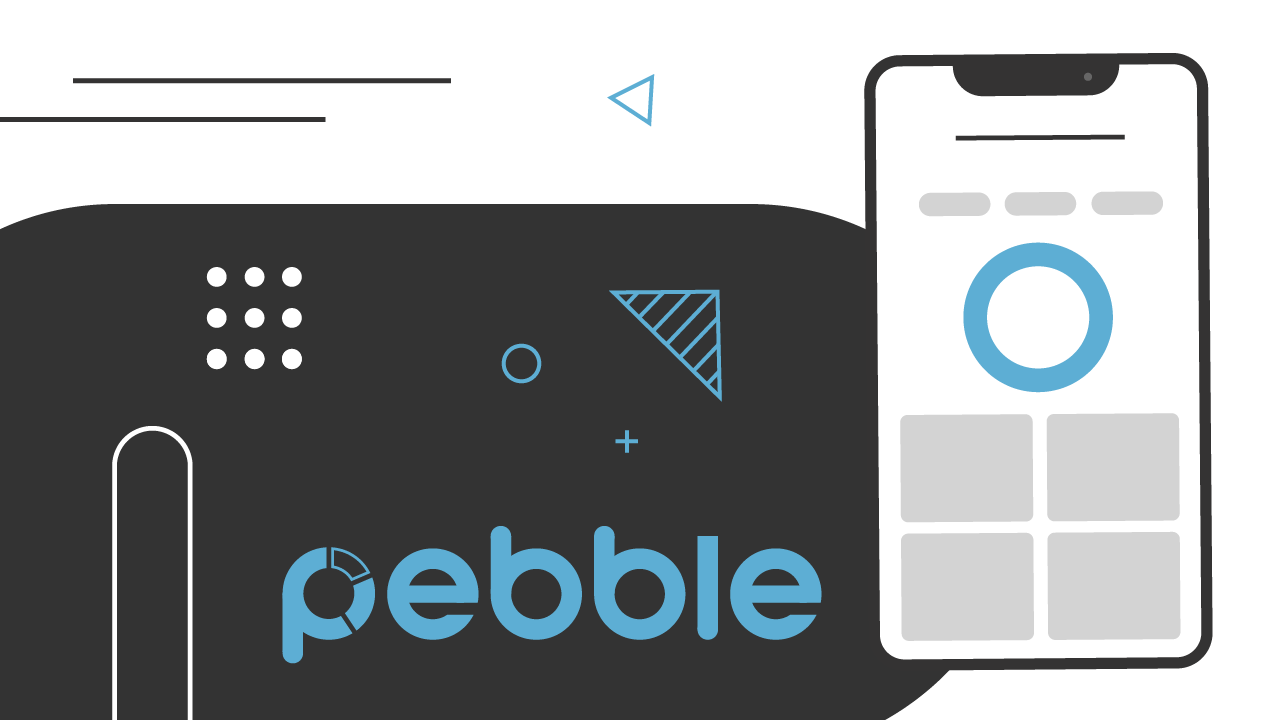
Pebbly Finance allows you to create your own index funds (in a way).
Index funds are a popular way to streamline your investment process. But opting for a standardized index fund means that you give up some of the control you might crave.
Pebble Finance offers a way to regain some control over the technical details of your investment portfolio without the need to invest in individual stocks on your own. The platform gives you the option to tweak indexes to suit your needs and goals.
For investors looking for a different option, we will explore what Pebble Finance is to help you decide if it’s a good fit for your situation.

Quick Summary
- Pebble Finance allows you to tweak indexes to create a portfolio that suits your needs, goals, and values.
- The platform offers a straightforward way to customize funds based on your values and themes you care about.
- Investors pay a monthly fee between $5 and $25.
Pebble Finance Details | |
|---|---|
Product Name | Pebble Finance |
Minimum Investment | $0 |
Monthly Fee | Between $5 and $25 |
Account Types | Taxable |
Promotions | None |
What Is Pebble Finance?
Pebble Finance is a Massachusetts-based investment platform that gives investors a streamlined way to pursue ‘direct indexing.’ As the investor, you have more direction over your portfolio than you would if you only invested in predetermined index funds. But you’ll hand off the nuts and bolts of the investing to Pebble.
What Does It Offer?
Pebble let’s you take index funds and ETFs and make them your own. They start you with the S&P 500 and let you remove companies or entire sectors you don’t wish to invest in.
Personalize Your ETFs
As an investor, a major appeal of index funds or ETFs is that you can buy a predetermined basket of stocks for your portfolio. By adding this type of investment to your portfolio, you gain exposure to a wide range of companies.
But the downside is that these predetermined collections of stocks might include stocks that you don’t want exposure to or companies that you don’t want to support. Pebble Finance offers a way around this conundrum. You’ll have the ability to craft a ‘pebble,’ which includes a collection of stocks that meet your unique specifications.
You could build a pebble that includes all companies in the S&P 500, and choose to exclude specific companies. For example, you could want to invest in every company in the S&P 500, except Tesla. You can exclude companies from an index based on technical aspects, like a specific P/E ratio, market cap, or EBITDA.
Another option is to build a thematic ETF based on market segments. For example, you might choose to build a thematic pebble that only includes solar companies or only includes tech companies. Some popular themes featured by the company include credit card companies, generative AI players, women CEOs, popularly boycotted companies, and home builders.
Ultimately, this company offers a way to balance between investing actively and passively. You’ll have the hands-off approach of passive investing. But you can tweak things here and there to make your portfolio match up with your values and goals.
The Ability To Stick To Your Values
When it comes to investing, you can use Pebble Finance to stick to your core beliefs. Instead of just opting for an index that includes a wide range of companies, like the S&P 500, you can choose to exclude companies that don’t align with your values.
For example, you might exclude companies that sell alcohol from indexes that you are otherwise alright with supporting.
Streamlined Research
Pebble Finance offers an explanation feature, which you can use to gather information about any company you are interested in investing in. Once you pull up a company, you can ask for a negative, balanced, or positive report on its performance.
Additionally, you can ask Pebble to review your current portfolio. You’ll need to connect to your brokerage platform via Plaid to get feedback on how your portfolio is doing.
Are There Any Fees?
Pebble Finance requires a monthly fee, which ranges from $5 to $25. Here’s a breakdown of the fee structure:
- Accounts with balances under $50,000 pay $5 per month.
- Accounts with balances between $50,000 and $100,000 pay $10 per month.
- Accounts with balances between $100,000 and $250,000 pay $20 per month.
- Accounts with balances over $250,000 pay $25 per month.
Although the price is per month, the fee will be collected quarterly.
How Does Pebble Finance Compare?
Pebble Finance isn’t the only company offering a streamlined approach to personalized investing.
M1 is an investing platform that allows you to invest based on model portfolios. But you’ll have the option to adjust your portfolio easily by changing your asset allocation strategy. In M1’s platform, you can do this easily by updating your pie, which is broken into slices that represent each asset you want to invest in. The visual nature of this platform can help you build and maintain a portfolio that aligns with your values and goals.
Charles Schwab offers a Stock Slices program, which allows you to invest as little as $5 into any company listed on the S&P 500. You can handpick up to 30 stocks from the S&P 500. From there, Charles Schawb will handle the details of fractional investing to build your chosen portfolio.
Header |  |  | |
|---|---|---|---|
Rating | |||
Monthly Fee | $5 – $25 | $0 – $3 | $0 |
Minimum Investment | $0 | $100 | $0 |
Banking | No | Yes | Yes |
Cell |
How Do I Open An Account?
If you want to open an account, the process starts by downloading the mobile app from either the Apple App Store or Google Play Store. From there, you can create an account by providing an email address, username, and password.
Once you confirm your email address, you’ll need to provide some information about yourself. Be prepared to provide information to verify your identity, tax status, and more. Some details include your name, birth date, and Social Security Number.
When your information is confirmed, you’ll be able to start investing through Pebble.
Is It Safe And Secure?
Pebble is SIPC insured, which means your investments are protected if the company closed its doors. But of course, investing money in the stock market comes with market risk.
The company’s privacy policy indicates it may share your information with marketing companies. But the good news is that you can limit this sharing by asking Pebble to not share your information.
How Do I Contact Pebble Finance?
You can get in touch with Pebble Finance by emailing contact@pebble.finance. The relatively new platform has few customer reviews. But so far, the company has earned positive feedback in the Apple App Store.
Is It Worth It?
The investment concept that Pebble Finance offers is worthwhile for some investors. If you are interested in relatively passive investing by wanting to make some tweaks to the more popular indexes, like the S&P 500, then Pebble makes the process easy.
But if you are content with the straightforward nature of index fund investing, then adding this level of complexity into the mix might not be the right fit for your situation.
Pebble Finance Features
Account Types | Taxable brokerage account |
Minimum Investment | $0 |
Monthly Fees | $5 – $25 |
Cash Back | 0% to 2% |
Socially Responsible Investments | You control which companies you invest in, but there are no preset SRI funds |
Access To A Robo Advisor | No |
Access To A Human Advisor | No |
Tax Loss Harvesting | No |
Customer Service Contact | contact@pebble.finance |
Mobile App Availability | iOS and Android |
Web/Desktop Account Access | Yes |
Direct Deposit | No |
Promotions | None |
Editor: Ashley Barnett
Reviewed by: Robert Farrington
The post Pebble Finance Review: Personalized Index Funds appeared first on The College Investor.



